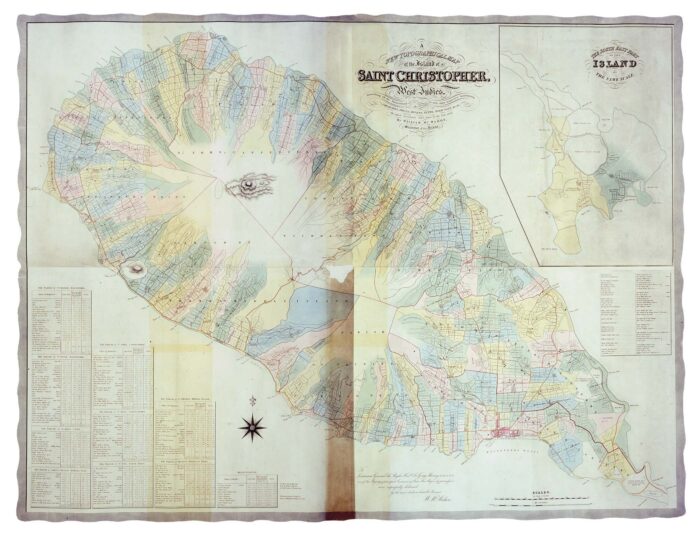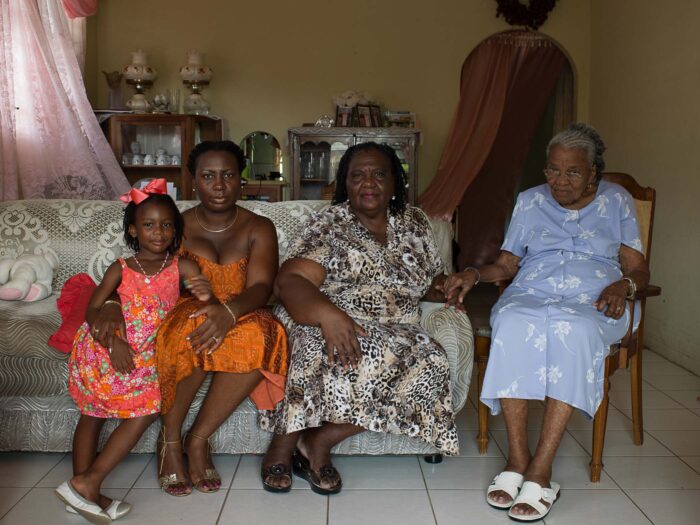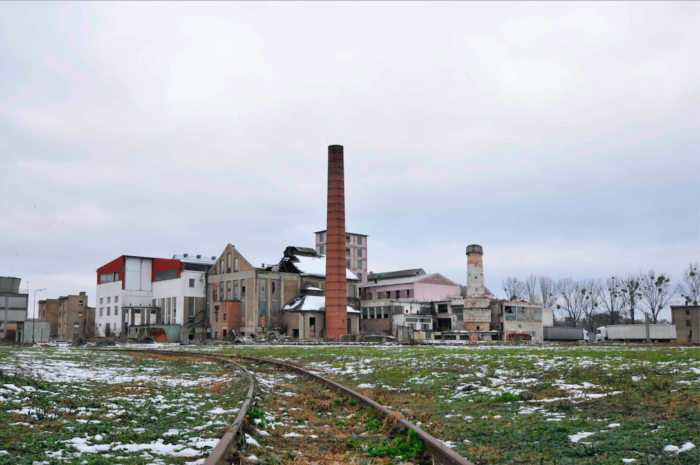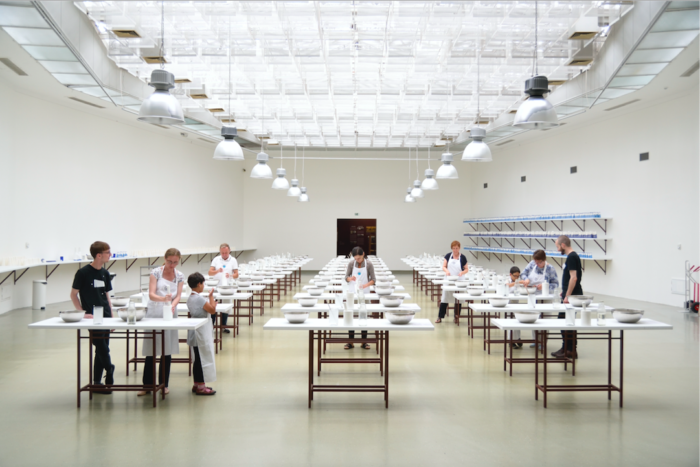
Pecha Kucha notes – Cécile Bourne-Farrell
#Cécile Bourne-Farrell #Colonial Legacy of sugar production #PechakuchaOn April 22, 2021, we were delighted with our first member Pecha Kucha. Five members were chosen through an open call to discuss their current and recent curatorial projects in the form of Pecha Kucha presentations: 20 slides are presented while a presenter has 20 seconds to comment on each slide, for a total presentation of 6 minutes and 40 seconds.
In our blog section, you can now follow the selection of three contributions, starting with Cécile Bourne-Farrell and her project “Colonial Legacy of sugar production”.
Colonial Legacy of sugar production
by Cécile Bourne-Farrell
April 22nd. 2021, Pecha Kucha
I have always considered artists, as much as curators, to be researchers.
For 25 Years, I have been working on the legacy of post-colonial narrations, from French, British and Lusophone perspectives. As the Windrush scandal unfolds itself here in the UK, the country where I have lived since 2013, I wanted to speak about my research on the notion of Sugar. This project aims to put in perspective the historical as much as the contemporariness of this material.
I have the pleasure to share here the work of three artists who have been addressing the Colonial Legacy of Sugar in their respective works. Part of this research has been published in close collaboration with Arts Cabinet editorial plateform.
Sugar is produced from leafy sugarcane crops and also from beetroot. It is sourced globally, from Africa and the Caribbean to Latin America, Oceania and Eastern Europe. Sugar has always been associated with slavery.
*Captation: Julian Germain, Mac Mahon’s Map, 2012.
*Captation: Julian Germain, 4 generations, 2012
• Julian Germain, a UK based artist, has exhibited notably at the Photographer’s Gallery, London, and the Baltic Centre for Contemporary Art in Gateshead.
It all started with the story of a mixed-race illegitimate person called Nathaniel Wells, who was born a slave on a sugar plantation in Saint Kitts in the West Indies. He inherited his father’s fortune and became part of the British aristocracy, Nathaniel Wells slave owner himself. He built one of the most magnificent house in the country, in Chepstow. Piercefield House was built using the profits of slavery and is now in the same derelict conditions as the sugar cane exploitations in Saint Kitts, which ceased around 2005. It is quite hard to imagine that in the late 18th century this very small island was the most profitable territory in the British Empire. Julian Germain found a lot of direct visual references to the sugar industry on the island, both pre and post slavery, which reminded him of North East England where pit villages and the remnants of coal mining abound. Saint Kitts is literally scattered with derelict sugar works and factories, now totally abandoned and overgrown places, and only one of them is preserved as a tourist attraction. 75% of Saint Kitts’ population are direct descendants of the sugar cane exploitations, that is generations after generations.
*Captation: Zineb Sedira, Sugar Craters, sugar Routes, Sugar Silo, Sugar Surfaces, 2013, presented here at the National Gallery of Scotland
• Zineb Sedira will represent France at the 59th Venice Biennale. Her work has been presented in several solo exhibitions at the Jeu de Paume in Paris, the Beirut Art Centre in Beirut, and the Sharjah Art Foundation Art Spaces, among others.
In 2012/2013, Sedira was invited to take part in the cultural events in Marseille, which was the European Capital of Culture. She decided to explore the Sugar Silo in Saint-Louis, not only visually, but also its captivating smell. She accentuated the grains of sugar and their colors as well as the traces of these monumental prints shown at the Liverpool Biennale this year, at the Open Eye Gallery on the harbour. The port of Marseilles was, after Liverpool, the largest port of slavery and sugar importation.
The sugar became more and more white according to its age, so it looked more and more like sand or mountains. The color varies depending on its origin, which is reminiscent of the analogy with the desert, the land or skin color. In order to show the difference in sugars, Sedira made a sort of sampling of the different types of unrefined sugars. A selection of the countries that appear are Zambia, the Antilles, Brazil, Burkina Faso, Guyana, Madagascar, and Swaziland, among others. This sampling contrasts with the monumentality of the silo and speaks above all of the question of skin color. “You can’t talk about cane sugar without talking about slavery.” says the artist
*Captation: Llona Nemeth, Former Sugar factory Pohronsky Ruskov-Oroszkavelka, 2012
*Captation: Llona Nemeth, personal show at Bratislava Kunsthalle « Eastern Sugar », 2018
• Llona Nemeth is a conceptual artist and a professor, and has undertaken the exploration of sugar manufacturing in Slovakia.
“That sugar factory was about 500 meters from our home. It had been part of the silhouette, the profile of the town, with its chimney, its factory building, but nothing remained of it. Really and truly, nothing. It was levelled to the ground, in fact a further 2.5 meters underneath, so that production could never be renewed. Today it’s an empty space.”
The first result of Nemeth’s extensive research was her exhibition at the Kunsthalle Bratislava in 2018, entitled Eastern Sugar. She carefully mapped and ‘archived’ the sugar factory sites in Slovakia that operated in 1989, the year of the Velvet Revolution, including their individual narratives, which led her to initiate a museum of sugar in her town.
This multi-part installation traces the architectural remnants of sugar manufacturing in Slovakia, from iconic views of factory towers, to bleak fields and the ruin-like structures of the recent European colonialism.
Cécile Bourne-Farrell
Based in London since September 2013, Cécile Bourne-Farrell is a curator bringing 25 years of expertise to cultural industry, to conduct public as much as private projects. Bourne-Farrell worked for the ARC/Musée d’Art Moderne de la Ville de Paris from 1991 to 1998, and since 2016, she has worked for for higher education institutions in Africa, Asia and Europe, including King’s College London. In 2019, she joined Arts Cabinet in an advisory capacity and as curator. From 2002 to 2008 she was an advisor for Drac Ile de France and the CNAP. Bourne-Farrell was a committee member of the Fondation Nmac/Montenmedio, Spain (www.fundacionnmac.org) from 2003 to 2008. She was also cultural mediator for the Fondation de France in Spain (www.newpatrons.eu) and since 2013, she has been the cultural mediator, with Mari Linnman, at 3CA in the suburbs of Paris.
From 2015 to 2017, Bourne-Farrell was co-curator of “Traces of War,” with Jananne Al-Ani, Baptist Coelho and Shaun Gladwell at Inigo Rooms for King’s College War Studies Department in London, with Vivienne Jabri, director of research. She was curator for SUD2017, triennale at Doual’Art in Douala, Cameroon.
In the fall of 2018, she was curator of “Puxar Pela Lingua” at AIR351 in Cascais, Lisbon, Portugal with Sofia Aguiar, Vasco Araújo, Daniel Barroca, António Bolota, Manuel Botelho, Márcio Carvalho, Tomás Colaço, Ângela Ferreira, Nuno Nunes-Ferreira, Edgar de Oliveira, Julião Sarmento, Leonor Veiga, Ana Vidigal and Yonamine. In 2020, Bourne-Farrell was curator of “Resilience, an Aptitude,” with Iván Argote, Younes Baba-Ali, Shiraz Bayjoo, Eirene Efstathiou, Michèle Magema, Corinne Silva and Yonamine, at Irène Laub gallery in Brussels, Belgium.
Bourne-Farrell writes regularly for periodicals such as Art Papers, she also writes articles for catalogues. She is an active member of AICA, C-E-A and CIMAM.
http://www.cecile-bourne-farrell.com
*Captation: Cécile Bourne-Farrell ©Virgilio Guimaraes












